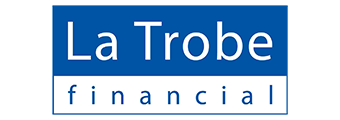According to the Australian Tax Office, there were just over 597,000 SMSFs in Australia as of March 2021, with more than 1.12 million members and assets totalling just over $787 billion. Many of these funds at some point may decide they’ve had enough of running it themselves and want to hand it off to one of the big industry players.
As is common with SMSFs, this is no small or mean feat, and there is significant regulation and processes that need to be followed to remain compliant. Here’s our guide to rolling over an SMSF to an industry fund.
Advertisement
Looking to take control of your retirement? This table below features SMSF loans with some of the most competitive interest rates on the market.
| Lender | Home Loan | Interest Rate | Comparison Rate* | Monthly Repayment | Repayment type | Rate Type | Offset | Redraw | Ongoing Fees | Upfront Fees | Max LVR | Lump Sum Repayment | Extra Repayments | Split Loan Option | Tags | Features | Link | Compare | Promoted Product | Disclosure |
|---|---|---|---|---|---|---|---|---|---|---|---|---|---|---|---|---|---|---|---|---|
6.49% p.a. | 6.51% p.a. | $3,157 | Principal & Interest | Variable | $null | $230 | 70% |
| Promoted | Disclosure | ||||||||||
6.74% p.a. | 6.79% p.a. | $3,240 | Principal & Interest | Variable | $0 | $220 | 70% | Disclosure | ||||||||||||
6.75% p.a. | 7.16% p.a. | $3,243 | Principal & Interest | Variable | $30 | $null | 80% | |||||||||||||
6.59% p.a. | – | $3,190 | Principal & Interest | Variable | $0 | $995 | 80% | |||||||||||||
7.00% p.a. | 7.39% p.a. | $3,327 | Principal & Interest | Variable | $0 | $445 | 60% | |||||||||||||
7.24% p.a. | 7.29% p.a. | $3,407 | Principal & Interest | Variable | $0 | $221 | 80% | Disclosure | ||||||||||||
6.59% p.a. | 7.15% p.a. | $3,190 | Principal & Interest | Variable | $395 | $null | 60% | |||||||||||||
6.99% p.a. | 7.01% p.a. | $3,323 | Principal & Interest | Variable | $0 | $230 | 80% |
| Promoted | Disclosure |
Can you roll your SMSF over to an industry fund?
Yes, you can roll your SMSF over to an industry fund. You’re not required to roll over all of the funds in the SMSF to the new industry fund, as it’s perfectly fine to have multiple superannuation accounts. There’s technically no limit on how many super accounts you can have but your balances will likely be eaten away by fees if you have too many. You may decide you want to keep your SMSF open because other trustees still need it, or you have an asset in there you don’t want to sell. For the purpose of this article, we’ll assume you’re rolling over your whole balance.
What reasons are there for rolling your SMSF over to an industry fund?
There are a number of reasons you might want to roll your SMSF over to an industry fund, including:
Simplicity
SMSFs can require a significant amount of work; they’re not called ‘self-managed’ for nothing. You can outsource a lot of this work to accountants and other finance professionals, but you still need to have some degree of oversight and understand how your fund is being run. Often, when people get to retirement age, they simply need a steady income from their super and don’t need a large number of assets or control over investments. An industry fund allows you to have an almost hands-off approach to your super, making life far easier for people looking for greater simplicity.
Mental health and cognition
Deteriorating health is, unfortunately, a common part of getting older. A trustee of an SMSF must legally have the mental capacity to hold the role, and if they don’t, they can no longer continue in their role. An example of such a situation would occur if a trustee was diagnosed with dementia. There are no legal restrictions around a person’s mental state if they’re in an industry fund, so rolling over is often a necessary legal requirement.
Death
If a trustee dies, there may no longer be a need or a want for the SMSF. As a result, the remaining trustees, if there are any, may decide to roll over to an industry fund. In the event the deceased trustee was the sole trustee, the fund would be wound up.
Divorce
SMSFs can be difficult things to manage when all the trustees are working in unison and on good terms. Conversely, divorces are often already awkward and messy affairs. Throw the two together and you have an incredibly complex and difficult environment. It may be the best thing for your lifestyle and also your super to distance yourself from your former partner, which will require you to roll over to an industry fund.
Compliance
If a trustee is found to have been convicted of a financial crime, like fraud, or is declared bankrupt, they can’t legally be a trustee of an SMSF. However, they can be a member of an industry fund, which they will have to roll over to, otherwise, the SMSF will be non-compliant, and face penalties.
How to roll your SMSF over to an industry fund
If you’re looking to roll your SMSF over to an industry fund, the following checklist will give you an idea of how the process will look:
1. Review the trust deed
A trust deed guides how an SMSF should be run and what it invests in. Often extensive documents, the deed may have provisions in it outlining how the SMSF is wound down or rolled over to an industry fund. Ensure the trust deed has been reviewed before starting the rollover process, to avoid inadvertently breaching conditions set out in the deed and becoming uncompliant.
2. Organise a trustee meeting
If you want to roll over your SMSF to an industry fund, you’ll need to discuss it with the other trustees. An SMSF can have up to six members in some circumstances, but if you’re the only one, a meeting is obviously unnecessary. You’ll all need to agree to roll over to an industry fund, decide on which one to go with, and what you’ll do with the assets. Once everyone has signed off on this, you can continue the process.
3. Review expenses and taxes
Rolling your SMSF over to an industry fund means you’ll have to tie up any outstanding expenses and debts the fund has. The cost of rolling over the fund will also need to be accounted for, which can add up given the amount of administration, accounting, legal, and audit fees you’re likely to incur. These all have to be paid out of the SMSF so you need to budget for this while also paying off any other expenses or debts. Disposing of assets may also incur Capital Gains Tax (CGT), which also needs to be accounted for.
4. Dispose of assets
An industry fund will take your super balances and invest them in accordance with their investment strategy. You’ll hopefully get a return on this which will increase your balance unless you’re in the drawdown phase. With an industry fund you can only deposit cash (which the fund then invests for you) and the appeal of an SMSF is it can house a range of assets, like property, art, and other high-end items. If you want to roll over to an industry fund, you’ll need to sell these types of assets. Keep in mind you’ll still have to sell these on an ‘arm’s length basis', at their true market value on a strictly commercial basis.
5. Finalise administration
SMSFs are heavy on administration. Prior to rolling over to an industry fund, you’ll need to finalise all paperwork, like previous financial year statements, tax returns, and copies of all records the SMSF was required to keep in its duration.
6. Complete ATO forms
The ATO will typically require you to complete two forms when rolling over super balances:
-
NAT 71223: A rollover initiation request to transfer the whole balance of superannuation benefits between funds.
-
NAT 70944: Used to rollover benefits transactions other than death benefit rollovers.
You’ll need to give both statements to your new industry fund, a copy to the affected trustees, and keep a copy for five years.
7. Arrange a final audit
You’ll need to arrange a final audit by an approved SMSF auditor to tie up any outstanding administration and reporting before you can roll over.
8. Wait for a response from the ATO and the industry fund
If you’ve done everything by the book, the ATO will notify you they’ve cancelled the SMSF’s ABN and record. The industry fund will contact you to notify the process has been successful.
How long does it take to roll your SMSF over to an industry fund?
There’s no concrete timeline on how long it takes to roll your SMSF over to an industry fund. It’s typically dependent on the make-up of your fund and your own situation. For example, if you had an SMSF that was made up solely of cash, you could roll this over fairly quickly, dependent on the speed of ATO approval.
However, if you had an SMSF with a large amount and variety of assets, you’d have to take the time to sell these. Selling property can often be a long and arduous process, between finding a buyer and settlement time. This is compounded by having to operate on an ‘arm’s length basis', and compounded further the more properties you have.
It’s also recommended you don’t rush through the process as it is rife with regulations and necessary compliance. Trying to speed it all up could mean you make an error which could result in penalties.
Rolling your SMSF over to an industry fund and CGT
Capital gains tax is paid on profit made when you sell an investment like property or shares. When you’re disposing of assets to roll over your SMSF to an industry fund you’ll probably incur CGT.
It’s important to take this into account for a number of reasons. Firstly, as previously noted, you’ll need to account for this cost before rolling over when reviewing the SMSF’s finances. Secondly, the timing of the asset sale is incredibly important. If a super fund holds an asset for longer than 12 months they’re entitled to a 33.333% discount on CGT, and if you hold it for less than 12 months you’re required to pay CGT on the whole capital gain.
As a result, you may want to time the roll over of your SMSF to an industry fund to take advantage of the discount available and potentially save yourself some money. For example, if the fund signed off on an investment property nine months ago, it may make financial sense to hold off for three months and potentially save yourself on CGT.
What is SuperStream?
Due to new government measures announced in 2019, rolling over any super will require trustees to use SuperStream.
SuperStream is a data and payment standard used for digital transactions within the super industry. It’s already widely used by industry funds and the ATO, but is now legally required to be used by SMSFs. The ATO states rollovers can be processed faster, more efficiently, and with fewer errors using the system.
To use the system, you’ll need the following:
-
An electronic service address (ESA)
-
An Australian business number (ABN)
You’ll also need to ensure your SMSF details are up to date.
Savings.com.au’s two cents
If you haven’t noticed already, SMSFs and rolling them over are incredibly complex. The ATO recommends you seek financial advice at all steps of the process to ensure no mistakes are made or engage someone to complete the whole process for you.
Photo by Luigi Pozzoli on Unsplash







